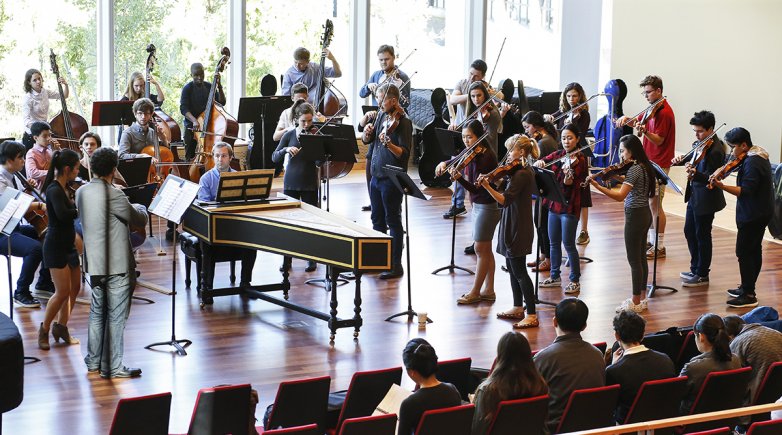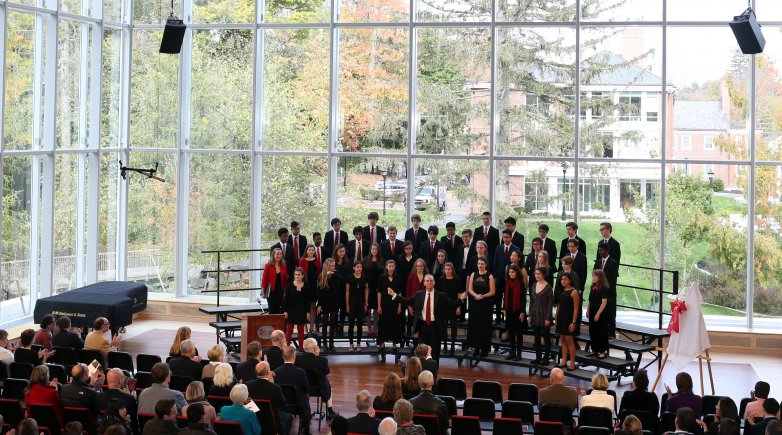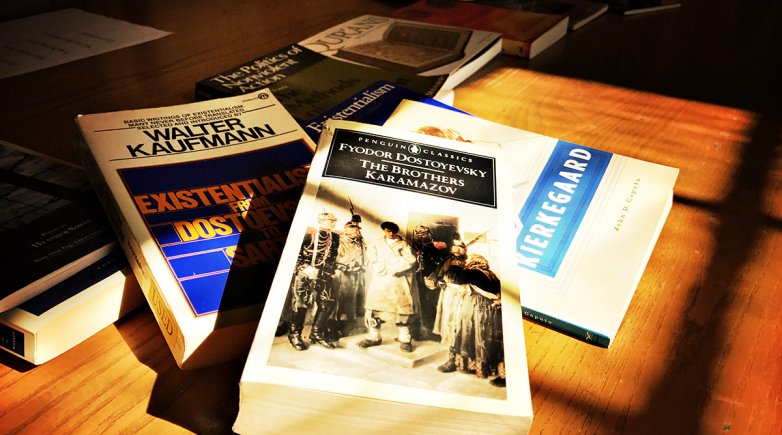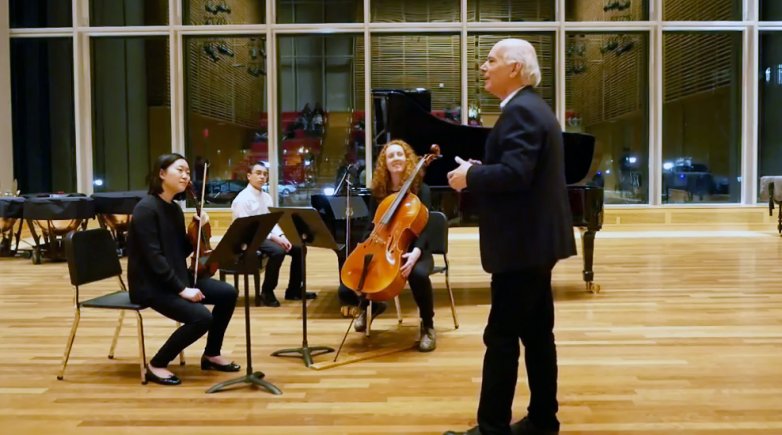Classical collaborations
Grammy-nominated string orchestra A Far Cry and Exeter’s Chamber Orchestra join forces on rehearsals and a transcendent concert.
Exonian musicians and A Far Cry rehearse in The Bowld.
Evening light streams through the windows of “The Bowld,” Exeter’s year-old performance space, creating a lapidary effect. On each side of the room hang elegant wooden baffles, intended to refract and modulate the sounds of the musicians who will shortly begin rehearsal. On the left floor sit a covered piano and timpani, while on the right a line of cello and double-bass cases begins to form, a row of gigantic dominos.
Taking their places at stands that music instructor and conductor Rohan Smith has carefully arranged, members of Exeter’s Chamber Orchestra commence warm-ups. A cacophony of scales and laughter ensues, the deep thrumming of the celli and basses contrasting with the high-pitched plucking of the violins.
Joining Smith and his students this evening are six members of A Far Cry, the self-directed, Grammy-nominated, Boston-based string orchestra. They have come to Exeter for two days of intense rehearsals with the violinists, violists, cellists and bassists of Exeter’s Chamber Orchestra in advance of a Friday night concert that the two groups will jointly present.
Violinist Alex Fortes of A Far Cry (individual members are known as “Criers”) is the designated leader of the rehearsals, providing demonstrations, feedback and encouragement. Fellow Crier and violinist Miki-Sophia Cloud, we’ll learn later, has curated the three concert pieces that will be played on Friday. Music selection and conducting is a shared effort among the 17 Criers, who work and operate democratically.
After a brief round of introductions, Fortes explains to the students that A Far Cry began work on Ouverture-Suite “Les Nations,” the Georg Philipp Telemann composition on which they’ll be collaborating, the previous Sunday. “We think of it as a fun and silly piece,” he says, “like an Olympics opening ceremony that might have occurred in the 18th century.” Indeed, as the first notes explode and reverberate, there is an undeniable sense of majesty, aided and abetted by The Bowld’s exquisite acoustics.




